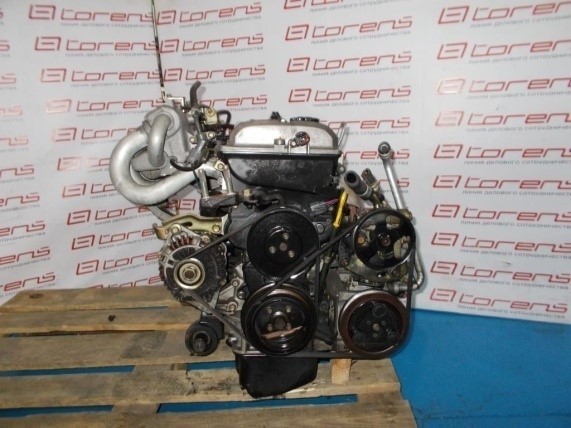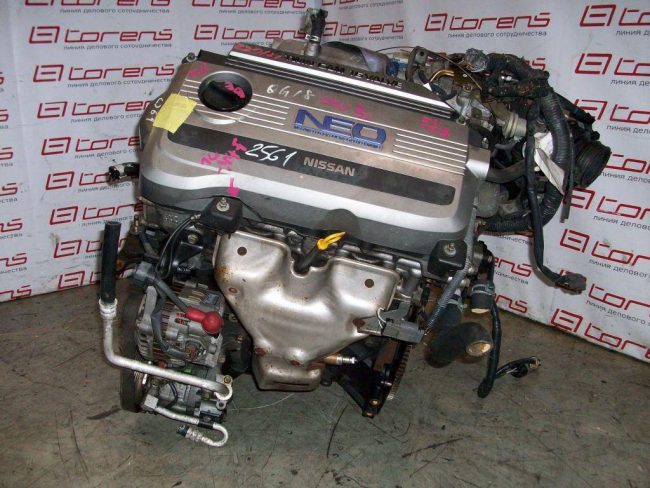
Engines Mazda familia, familia s wagon
Content
Mazda familia is a series of cars produced from 1963 to the present. For a long time, these brands were considered the best series of all cars produced by Mazda.
Mazda surname came off the assembly line and with the joint efforts of Mazda and Ford companies - for example, the well-known brand Laster was produced for several years.
The evolution of Mazda cars includes several generations of car production. The first generation was released in September 1963 - one of the first cars available to the buyer was a two-door modification of the Mazda Familia wagon. This model was not entirely practical and did not meet all the requirements of buyers of that time.
Literally with short breaks over the course of several years, the first generation of cars was improved and modernized - four-door sednas, station wagons and coupes became available to motorists.
 Since 1968, the next generation has been represented by five-door station wagons. For several decades, Mazda has released nine generations of cars with a variety of equipment.
Since 1968, the next generation has been represented by five-door station wagons. For several decades, Mazda has released nine generations of cars with a variety of equipment.
Among the many models in Russia, the most popular are:
- mazda family s wagon;
- Mazda Familia sedan.
During the production of the Mazda surname wagon and sedan in 2000, restyling was introduced - structural changes to some elements of the body and interior. The changes affected the interior trim, front and rear lights, as well as the bumper.
The main characteristics of the mazda familia models:
- Number of seats with driver - 5.
- Depending on the configuration, the models are equipped with front- or all-wheel drive. As a rule, fans of city driving tend to front-wheel drive, which is justified by saving fuel consumption and ease of maintenance of the chassis.
- Ground clearance is the height from the ground to the lowest point of the vehicle. The clearance of the Mazda surname lineup varies depending on the drive - from 135 to 170 cm. On average - 145-155 cm.
- All types of gearboxes are installed on the models - mechanical (MT), automatic (AT) and variator. On the Mazda Familia s wagon, there are only two options to choose from - automatic or manual transmission. As you know, the MCP is unpretentious in maintenance and residually durable. Automatic transmission has a smaller resource, will cost the owner a higher price tag, but is more comfortable in traffic jams. The variator is the most economical option, but the most unreliable in terms of design. Here, Mazda engineers provide motorists with a great choice.
- The volume of the fuel tank varies from 40 to 70 liters - the minimum volumes correspond to small cars with a small engine size.
- Fuel consumption largely depends on individual driving habits. On small cars, consumption starts from 3,7 liters per 100 km. On front-wheel drive cars with an average engine capacity, this figure varies from 6 to 8 liters, and on all-wheel drive cars with an engine capacity of about two liters, from 8 to 9,6 liters per 100 kilometers.
Latest generations of Mazda familia vehicles and engine brands
| Car generation | Engine |
|---|---|
| Tenth generation | HR15DE, HR16DE CR12EN MR18DE |
| Ninth generation | B3 ZL RF B3-ME ZL-DE ZL-VE FS-ZE QG13DE QG15DE QG18DEN QG18DE YD22DD |
| Eighth generation | B3-ME B5-ZE Z5-DE Z5-DEL ZL-DE ZL-VE FS-ZE FP-DE B6-DE 4EE1-T BP-ZE GA15 SR18 CD20 |
| Seventh generation | B3 B5 V6 PN BP |
| The Sixth Generation | E3 |
| E3 E5 B6 PN |
Most popular engine brands
During the production of cars, each generation was equipped with a variety of internal combustion engines (ICE) - from subcompact to diesel two-liter. Over time, the perfection of internal combustion engines, as well as components and assemblies, went on, already in the 80s, engines with a turbine began to appear in some models, which added power and put these cars out of all competition compared to their classmates. The most popular engines installed on cars of the ninth and tenth generations.
- HR15DE - sixteen-valve four-cylinder engine of the HR series with an in-line arrangement of cylinders. The internal combustion engine of this series was installed on the tenth generation mazda familia cars. This engine was the most popular both before and after restyling. Engine volume of 1498 cm³, with a maximum power of 116 liters. With. The DOHC gas distribution system means that the engine has two camshafts that provide sequential opening and closing of the valves. The fuel used is AI-92, AI-95, AI-98. The average consumption is from 5,8 to 6,8 liters per 100 km.

- HR16DE is a modernized counterpart of its predecessor, it differs from the previous one in volume - it has 1598 cm³. Due to the larger volume of the combustion chamber, the motor is able to develop more power - up to 150 hp. The increase in power was reflected in fuel consumption - the internal combustion engine eats from 6,9 to 8,3 liters per 100 km. The power unit has also been installed on some Mazda familia models since 2007.
- ZL-DE - this power unit was installed on some cars of the ninth generation (Mazda 323, last name and wagon). The volume is 1498 cm³. This sixteen-valve engine has two camshafts, four cylinders arranged in a row. Each cylinder has two intake and two exhaust valves. In all respects, it is slightly inferior to the HR series units: the maximum power is 110 hp, but the fuel consumption is 5,8-9,5 liters per 100 km.

- ZL-VE is the second engine that was equipped with some ninth generation cars. When compared with the ZL-DE model, it significantly wins in terms of power, which is 130 hp. with fuel consumption - only 6,8 liters per 100 km. The ZL-VE motor was installed on Mazda Surname and Mazda Cars from 1998 to 2004.
- FS-ZE - of all the above models, this engine has the most solid parameters. The volume is 1991 cm³, and the maximum power is 170 hp. This power unit is equipped with a lean mixture combustion system. Fuel consumption is highly dependent on driving style and ranges from 4,7 to 10,7 liters per 100 kilometers. This internal combustion engine was widely used on cars of the ninth generation - it was installed on the Mazda Surname and the car, Mazda Primacy, Mazda 626, Mazda Capella.
- QG13DE is a classic subcompact engine that took a leading position among economical motorists of that time. The engine capacity is 1295 cm³, the minimum fuel consumption is 3,8 liters per 100 km. At maximum speed, consumption rises to 7,1 liters per 100 km. The power of the power unit is a maximum of 90 hp.
- QG15DE - The QG15DE engine has become a worthy competitor to the previous model. The designers, having increased the volume to 1497 cm³, were able to achieve a power of 109 hp, and fuel consumption has changed slightly (3,9-7 liters per 100 km).
- QG18DE - QG series engine, in-line, four-cylinder, sixteen-valve. As with previous analogues - liquid cooling. The volume is 1769 cm³, the maximum developed power is 125 hp. Gasoline consumption averages 3,8-9,1 liters per 100km.
- QG18DEN - unlike the previous counterpart, this motor is unique in that it runs on natural gas. Received wide popularity due to the economical price tag of refueling fuel. The working volume of all four cylinders is 1769 cm³, the maximum power is 105 hp. fuel consumption was 5,8 per 100 kilometers.

All QG series engines were installed on the ninth generation mazda familia cars from 1999 to 2008.
Which engine is better to choose a car
In choosing a car, the characteristics of the motor play a key role. There is no single answer that could satisfy most car owners. The manufacturer tries to adapt to the consumer and launches on the market those cars that best satisfy the needs of the majority.
When choosing the heart of a car, the following points are key:
- Engine efficiency - with the constant rise in gasoline prices, small cars are becoming the most popular. The modern consumer is becoming smarter, low fuel consumption is a defining moment in choosing a car.
- Power - no matter how we try to keep up with efficiency, the number of horses under the hood is still very important. And this desire is quite natural - not everyone wants to drag a truck along the highway, and when overtaking, mentally “push” their iron horse.
We should not disregard the fact that scientific progress does not stand still. Even today, car manufacturers offer us a unique solution - economical engines with minimal power loss. The most relevant are cars with the following engines:
- HR15DE - judging by the reviews of car owners with this engine, if you don’t “play around” with the gas pedal, you can significantly save on fuel, and power is more than 100 hp. will allow you to feel confident on the track even with the air conditioning on.
- ZL-DE - this power unit also falls under our "gold standard" rule. Relatively high efficiency is combined with adequate power indicators.
- QG18DEN - gas engine will allow you to significantly save on fuel. If you have no problems with gas stations, purchasing a car with this engine will be a great solution.
- FS-ZE - for fans of a powerful ride, this option will be the best. The maximum consumption is 10,7 liters per 100 km. But with such power, most of the "classmates" consume much more fuel.

